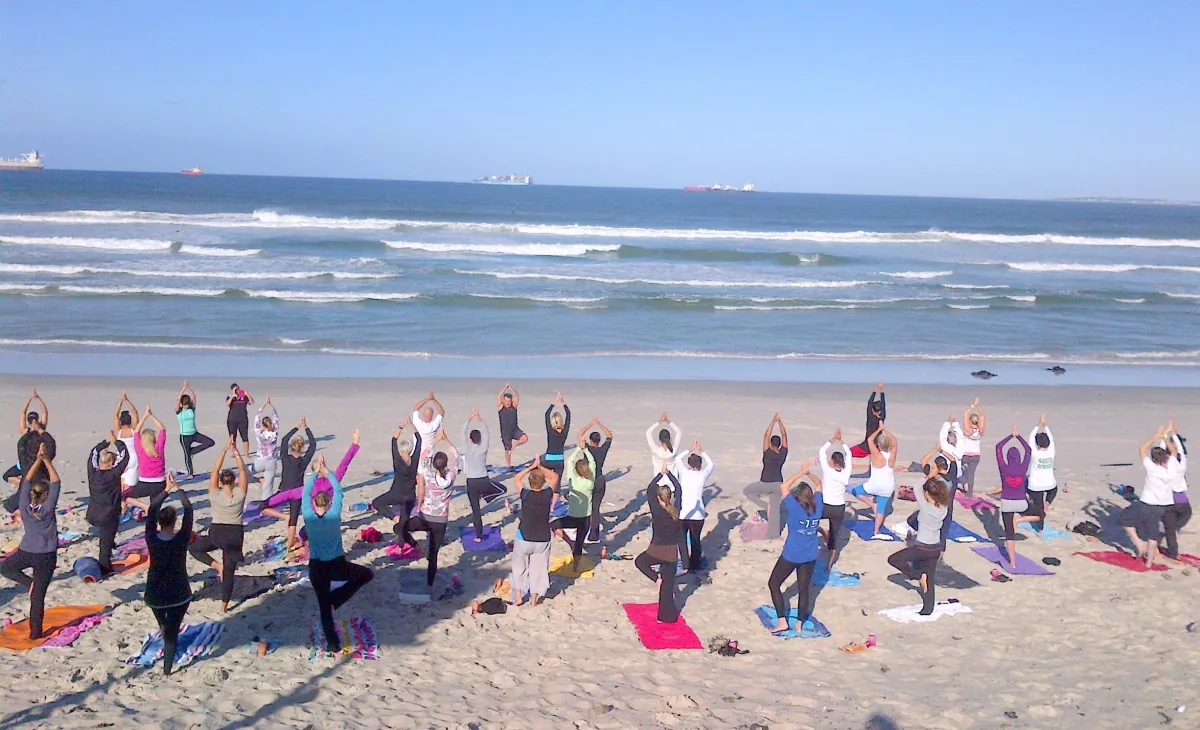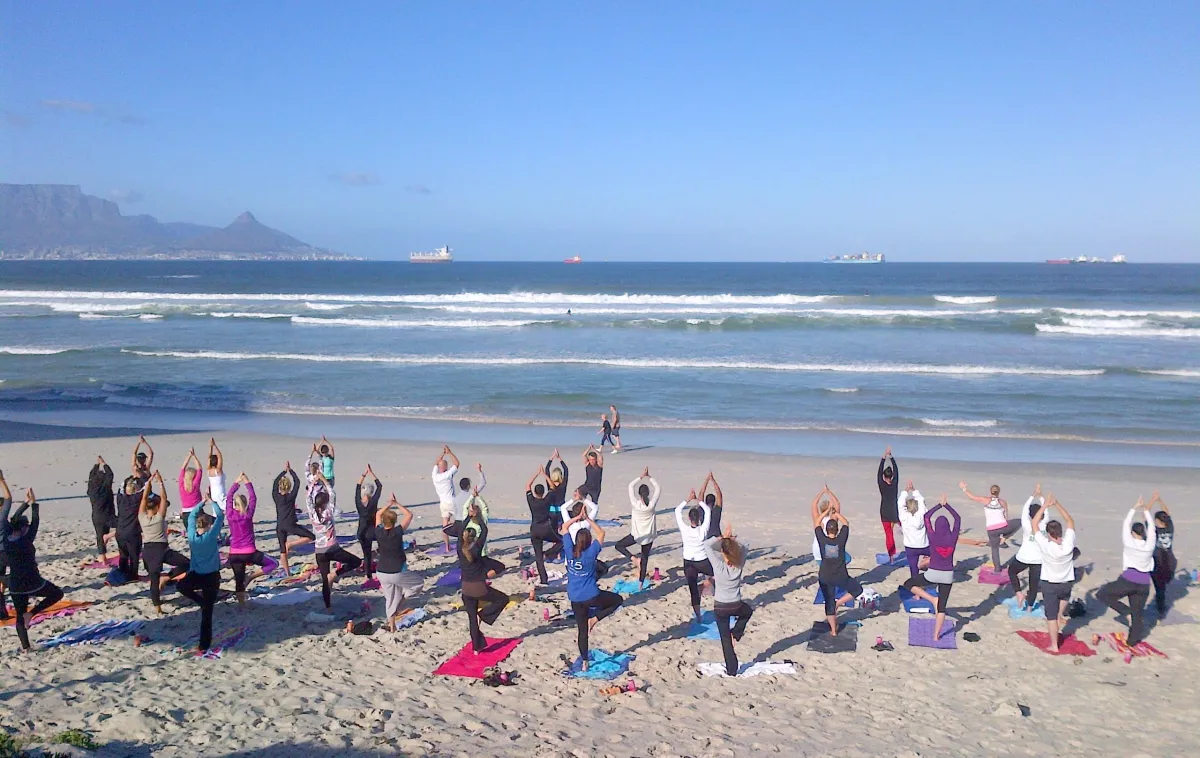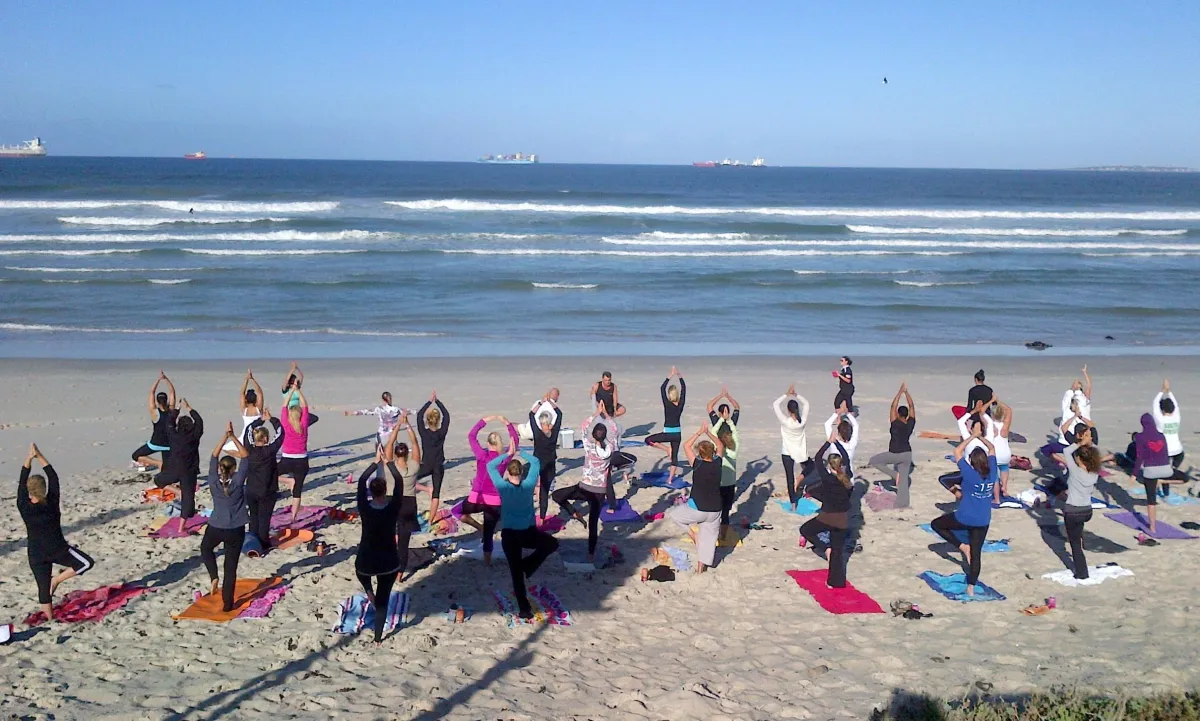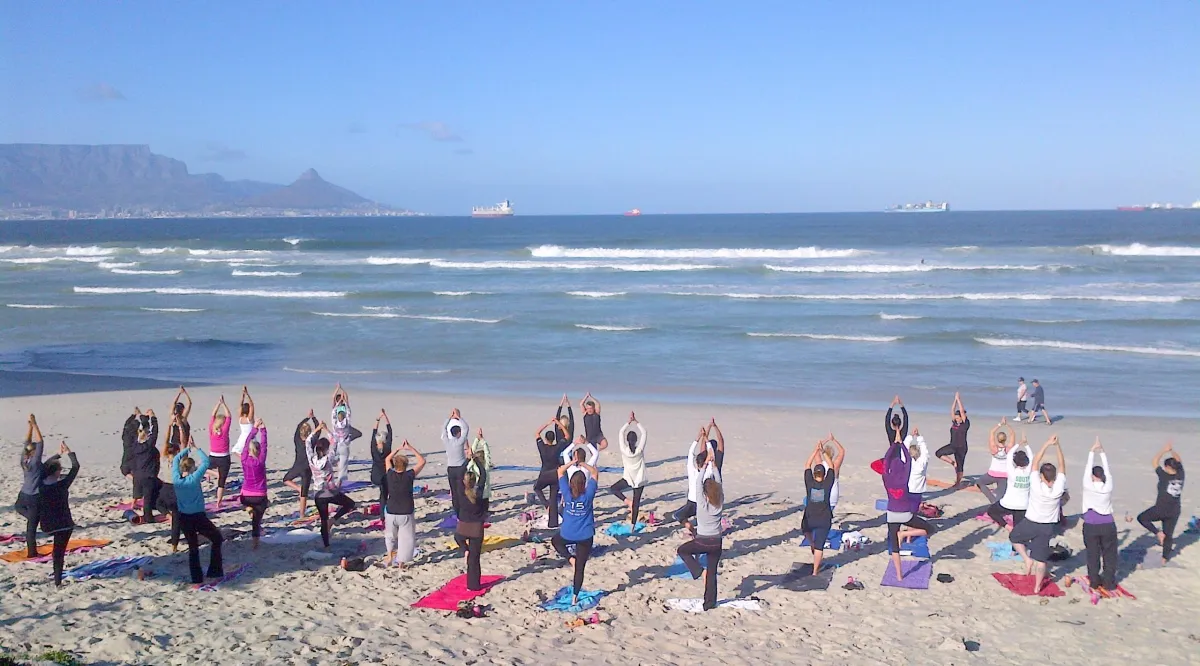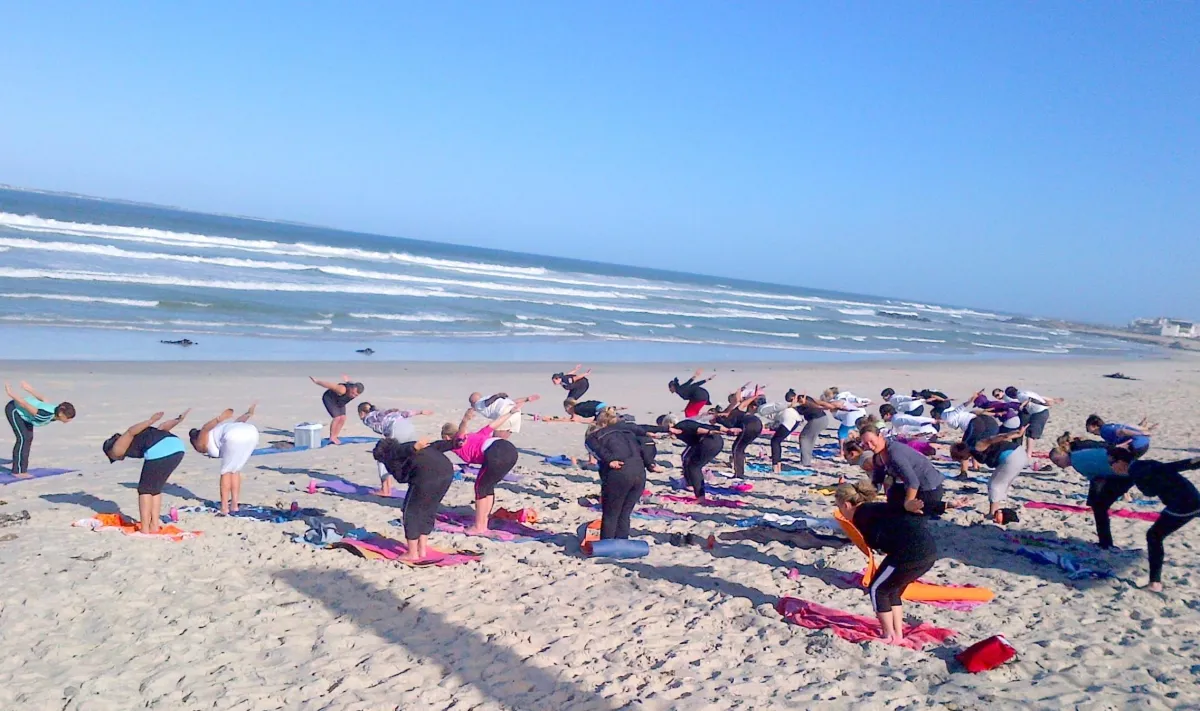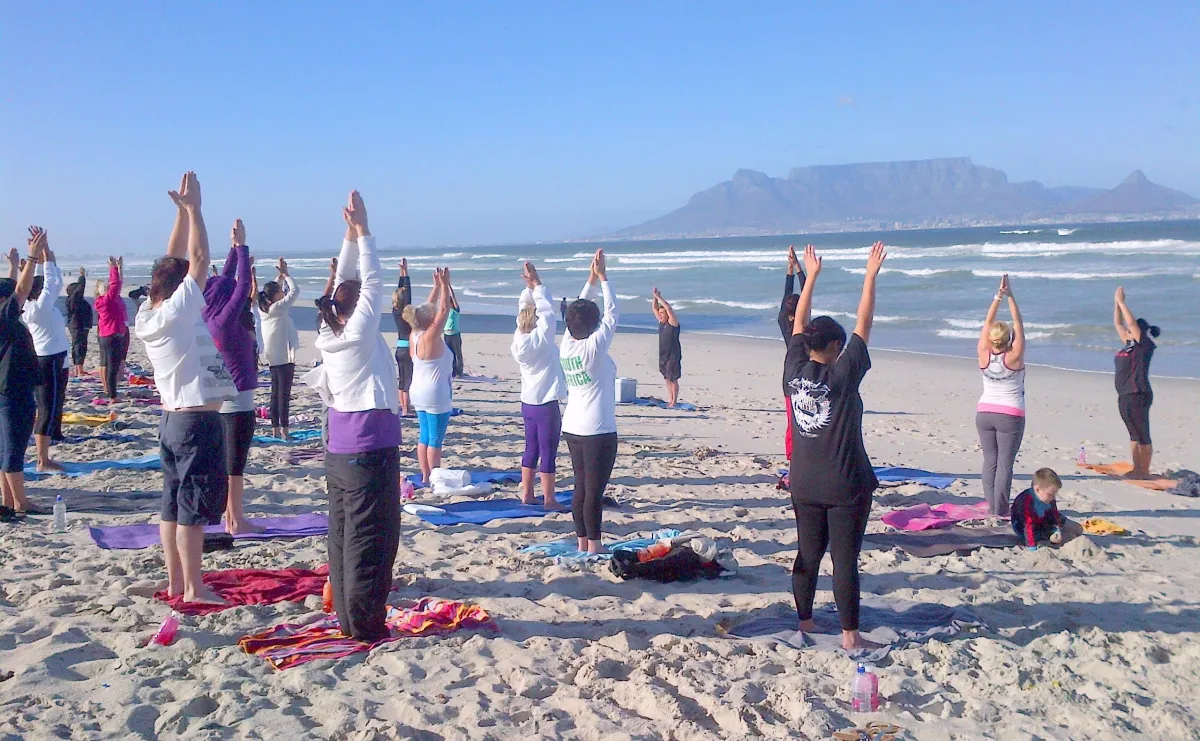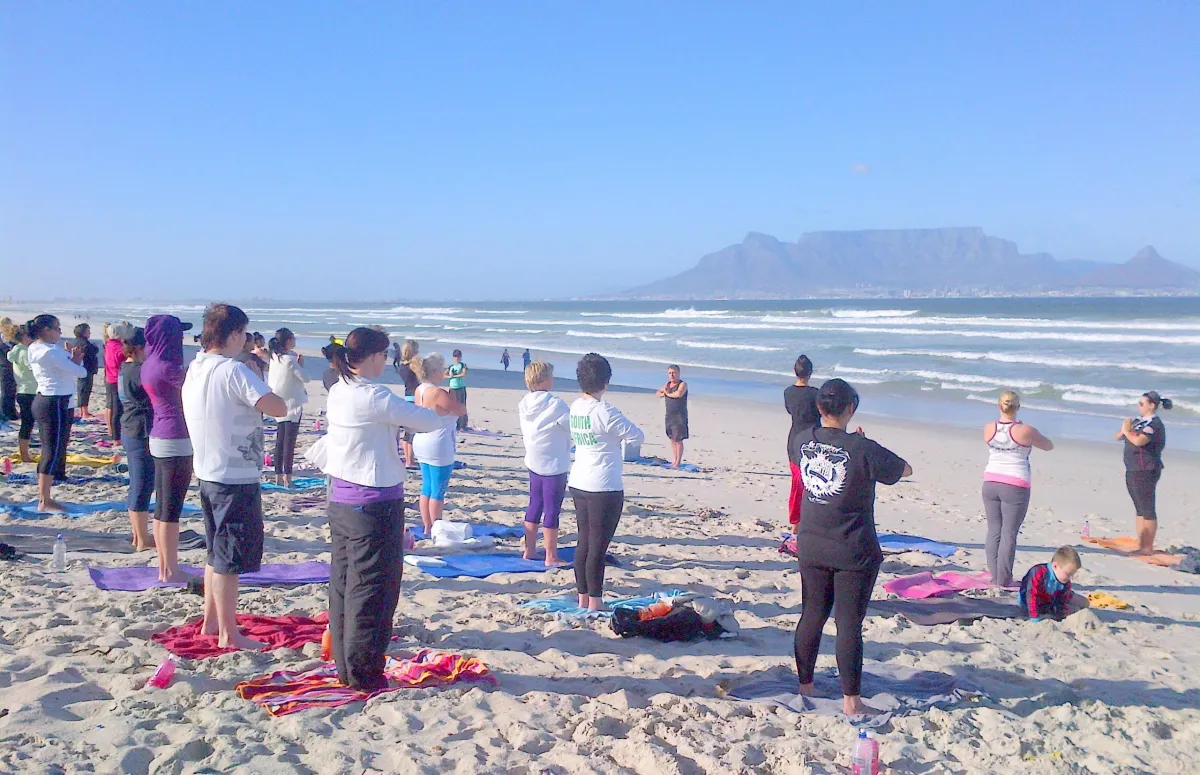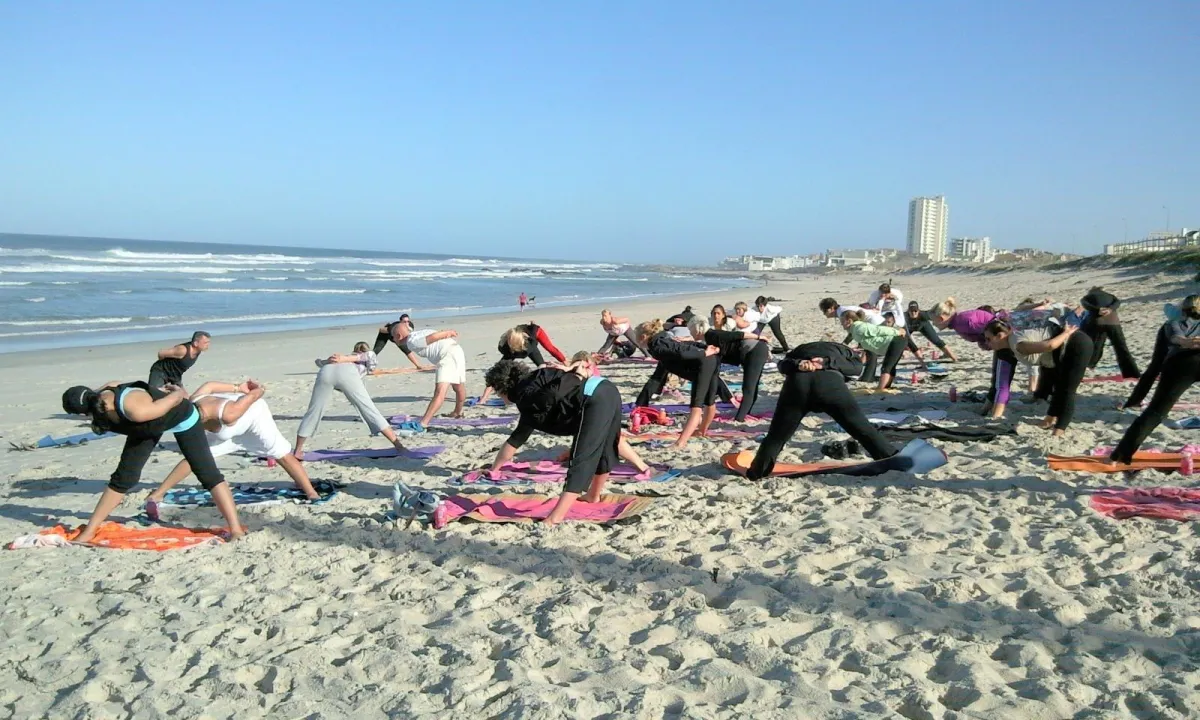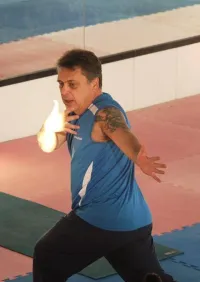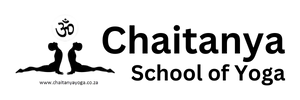About us
YOGA IS POSSIBLE FOR ANYBODY WHO REALLY WANTS IT
HOME / About Us
Our Spiritual Guides and Teachers, Approach and Beliefs at Chaitanya School of Yoga
“There are two ways to life your life. One is as though nothing is a miracle. The other is as though everything is a miracle.” ~Albert Einstein
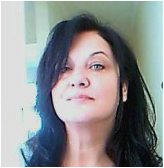
ROSALYNE - Founder of Chaitanya School of Yoga
Rosalyne started her practice of yoga inspired by the books of Swami Shivananda and Yogananda in 1989, being a guest seeker at Osho Ashram where she received initiations and Mantra Diksha in Tantra, Hatha and Kundalini Yoga, Mantra and Yantra meditations techniques. From the beginning of 90's she continued her studies and practice of yoga on a regular basis, daily, in large groups and ashrams in Europe and later in Asia, thus becoming an experienced yogini and spiritual guide, with over 20 years of experience* (proven personal results of practicing yoga) in Hatha, Kundalini, Kriya and Tantra yoga, Meditation, being well knowledgeable of Jnana yoga and Advaita Vedanta.
Through her spiritual practice, she has acquired a penetrating insight into the nature of being and existence, thus what she is sharing is not "books letter texts ", but her experiential and direct spiritual knowledge via highly efficient methods explained in modern terms, designed to allow one to transcend the daily existence and integrate it with success into the subjective existence.
Throughout the years, she has specialized in solitary retreats, and dark room retreats 3-12 days, following the example of her Jnana and Advaita Vedanta teachers, Ramana Maharshi and other Jnâna Yogi, who consider the solitary retreat as the last and the most important in Yoga practice.
When traveling and living in Japan, Singapore, South Korea, Taiwan, Rosalyne began her journey on the path of Buddhism, practicing their methods for years in Tokyo and Kamakura, Singapore, Seoul, sharing at the same time her knowledge in yoga with her Asian friends and students.
Rosalyne has reached high states of spiritual realization, being able to offer a proven path to spiritual accomplishment and she does it in well-understandable and modern concepts, without the usual mystification which come with this sort of information. She is among those "Old school "spiritual guides well trained in Kundalini Yoga, Advaita Vedanta or Ayurveda, as well as in the highly spiritual Tantra Yoga, Kashmir Shaivism, Kriya Yoga, Tibetan and Zen Budhism, having the ability to give a comprehensible representation of the world's spirituality in a modern and practical form.
Being among those exponents of a modern trend of thinking in Yoga, teacher of true ancient knowledge of India and Tibet, she is able to guide safely adepts toward and into the highest stages of Yoga, which culminates with Kundalini awakening and Siddhis, Samadhi and Enlightement, without failing. Her studies are of literature ( journalism) and psychology , and her interests of quantum physics and mechanics, philosophy of religions, specializing in Ayurveda, Tantra and Kriya Yoga, Kashmirean Shavism and Mantra meditation.
She is a writer and an inspired poet , her mystical and philosophical essays and poems inspire the minds and hearts of the readers, giving them insight in the ways and heights of the heart and mind of a spiritual person.
In the last period Rosalyne doesn't teach anymore large groups, choosing Yoga therapy for private and small groups of people in need of Yoga, and preparing new Yoga teachers to know the highest and real science of Yoga, beyond the all visible "gym yoga" trends, following the "Integral Yoga Teachers Training" course program, that she and Laurence created.
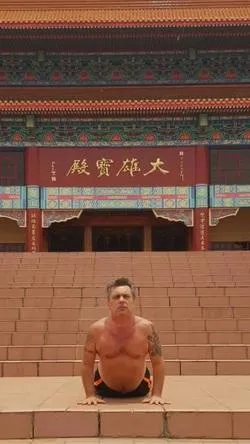
LAURENCE - Founder and Director of Chaitanya School Of Yoga
Co-founder with Rosalyne, and Director of Chaitanya School Of Yoga in South Africa, LAURENCE has studied Hatha yoga,Vinyasa , Yin Yoga , Yin Yang Yoga , Mantra and Yantra Yoga (Raja), Tantra, Kundalini, Tibetan Yoga and Tibetan Vajrayana Buddhism, being a Master Yoga teacher and an inspiring spiritual guide . Gifted with a strong will-power, mental clarity, and deep intuition, he possesses what is called "genius of heart'', a genius of a pure consciousness, which makes him calm and tireless throughout his busy day and schedule, always smiling and happy, he inspires by his personal example , easy to talk to and very knowledgeable on most subjects from yoga and sports to real estate market and finances, many times with a great sense of humor and kindness.
Laurence discovered the science of yoga after having suffered for many years with alcohol addiction, and whilst in rehab discovered the science of Yoga, Thai Chi , Chi Gong, and Vipasana (Zen meditation) , which has helped tremendously in his recovery. Now over 20 years free of any addictive substances Laurence has found a new way of life and thinking and wants to share his experiences with people who have or are suffering the same fate.
He has dedicated his life to opening a new way for those desiring light and new horizons , guiding others along this pure spiritual path. The serious approach of Laurence towards Yoga and its teachings, his devotion and passion to Yoga and, last but not least, his fresh sense of humor, make Chaitanya Yoga School a favorite place for practicing Yoga in Cape Town. Laurence says to his yoga students:
"Be yourself, enjoy yourself when you're doing yoga, be still and have patience when you meditate, and your life will change for the best. Above all, persevere in your practice of yoga and meditation, and respect the yogic code of conduct Yama and Niyama, and your success will follow"
"I have been privileged to have met wonderful teachers on my journey of life. Some have become friends and partners, others have become mentors and have touched my life and helped shape me into who I am today. Deepest gratitude and appreciation is present for the awesome life I am privileged to be enjoying every day. My prayer is that I can help others live the life of their dreams because I have learned that “Anything is possible!” Laurence Milner
Our Approach and Beliefs at Chaitanya School of Yoga
We always follow the values and practices of the classic Yoga in our classes. We are convinced that the millennium yoga tradition requires an appropriate attitude, in order for a person to achieve positive results. We pay attention to other similar doctrines too, but always considering the aims of Yoga, which are the freedom of a fulfilled life achieved on the way of self-awareness.
We understand that the ideal of consciousness and awareness with respect to the different aspects of human nature is the essence of all Yoga styles and it cannot have as its alternative the numerous modern currents using the name “yoga”. Often, and not without a reason, Yoga is likened to a science. We know that every science can be learned by hard studying and practicing.
This conditional division into theory and practice can be compared to the two wings of a bird - without one of them the bird will not be able to fly. Similarly, in Yoga be it Indian or Tibetan, the theory and the practice have always been inseparable and the progress in one of them will not be possible unless there is progress in the other one as well. But when we speak of spiritual science, a third component has a deciding role, and that is the communication with a person who has already adopted the spiritual path in his life.
The respected yogis Laurence and Rosalyne are exactly those sorts of Spiritual Guides. Their down- to-earth manner, clear mind, warm heart and understanding attitude, are real treasures for all of the people and students searching for guidance and insight, or simply for help.
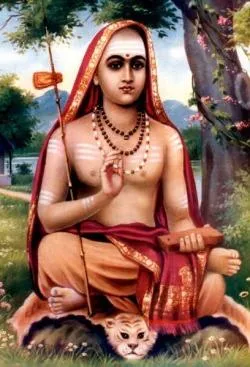
10 Stanza on Atman
WISDOM OF THE WORLD
SHANKARA AND ADVAITA VEDANTA - THE PHILOSOPHY OF NON-DUALISM
Shankara (Sankara) is probably the best known and influential philosopher of India. He became an ascetic very early in life and was influenced by Gaudapada who wrote a major piece on Vedanta.
More than 300 written pieces of works are attributed to Shankara; his commentary on the Brahma-sutra is celebrated as his masterpiece and is now school text as an introduction to Vedanta. Vedanta is the philosophy that developed out of Vedic oral traditions and scriptures. It is translated as the 'conclusion' of the Vedas, which includes texts like the Upanishads, the Brahma-sutras and the Bhagavad-Gita. These writings are even older than the Bible and there are scholars who see the origin of all major religions in these 'revelations of Truth'. The Jnana Yogi Ramana Maharishi once said that the whole Vedanta is contained in the two Biblical statements: "I am that I AM" and "Be still and know that I am God."
According to Vedanta philosophy, the human soul is part of All-awareness (Brahman). The human soul got involved with mental activity and is reborn until this circle is broken through remembrance of clear Awareness or Consciousness. It compares with a dream: We are reborn into the dream-state again and again unless we can find a way to stay awake. As all scripture and sages teach, waking up from our mortal dream is indeed possible.
Shankara, in accordance with the philosophy of Vedanta, teaches that there is only one Reality, one God (Brahman). Everything else is subjected to change and is no more than an expression of Reality. When seen as Reality, the world is an illusion (a notion that is now becoming popular with quantum physicists).
Since most folks prefer a simpler belief system, Shankara taught his philosophy mainly to Brahmins and intellectuals, who had no problems understanding Brahman as the omnipresent, eternal, Consciousness. They understood this Awareness as the essential Self within and everything else as a phenomenona mere appearance. His reasoning was resting on logic, the interpretation of the scriptures, but also on direct knowledge.
The philosophy of non-dualism is called Advaita and Shankara's philosophy is sometimes called Atmadvaita.
Self-Knowledge: Shankara's Treatise
short summary for advanced seekersSelf-Knowledge, known in India as the Atmabodha, is a short composition of 68 verses attributed to the great Indian philosopher SHANKARA . With this composition Shankara tries to serve all those who are ready to understand the Truth, which means they must be ready to break all ties and desire Liberation.
Below is a quick summary of the content in Shankara's treatise (these paragraphs are not verbatim):
Only direct Knowledge can be the cause for Liberation. Action by itself cannot destroy our illusions and delusions. It is because of our ignorance that we appear to be finite. When ignorance is destroyed by Knowledge, the Self reveals Itself by Itself, like the sun when the clouds are removed. Right practice leads to Knowledge.
The world is like a dream: It appears to be real as long as we are ignorant of the Truth. When we are awake the world has disappeared like a dream. The world is like the illusion of silver in an oyster shell. All forms exist in the imagination of the perceiver. The world is to the all-pervading Awareness of God like the bracelet is to gold. As long as we admire the form, we do not see the gold. If we see the gold we do not admire the form.
All characteristics are superimposed on the all-pervading Awareness. The gross body is formed out of five subtle elements. The subtle body is made of five pranas. The Awareness takes on characteristics in the same way as a crystal may take on the color of something that is red, blue, or green.
Through discrimination, the seeker has to isolate the pure innermost Self from the mental coverings. The Self is only reflected in the clear mind. The Self, as pure Awareness, has to be seen as being distinct from body and mind. Like the moon appears to be moving when clouds are moving, so the Self appears to be active when mind and the senses are active.
The nature of the Self, as pure Awareness, is Eternity, Purity, Reality, Consciousness, and Bliss. When the Self gets confused with body and mind it is overcome by mortal fears. The Self regains fearlessness by realizing the Truth about Itself.
Awareness does not need another instrument, like the mind, to be aware of Itself. The Self is not this or that but Itself. The Self is without attributes and action. The Self is changeless, eternal, pure, and free. The Self is pure Awareness as God is pure Awareness. Pure Awareness is without a second.
He who has attained the Supreme Goal dwells as the embodiment of Infinite Consciousness and Bliss. The practice that destroys ignorance is constant meditation. Because of ignorance the ever-present Awareness is not recognized.
The seeker who has realized the Self sees the entire universe as the Self.
Ten Stanzas (on Atman)
by sha.nkaraachaarya
Shankara sums up the essence of Vedanta in dasashlokii . He states that Only Atman Is while the world of names, form and various manifestations are just maya . He goes on to say that Atman is same as the supreme Brahman . Shankara also emphasises, as do upanishhads that the man who realizes aatma ALONE transcends worldly sorrow (tarati shokaMaatmavit).
After writing a wonderful commentary on Gaudapada's karika on maaNDukya upanishhad, and upadesahasri in my humble opinion, the best philosophical work of Shankara, many scholars consider dashashlokii to be the last pronouncement of Shankara on the non-dual nature of Atman . In a very simple way using just 10 verses, Shankara expounds on the nature of Atman -- the attributeless Truth, indestructible, and the very basis of supreme bliss and purity.
This text deals with the nature of Atman in the clearest and simplest language . There is not a single word which is superflous,and the teacher [Shankara] is at this best; the arrow of knowledge is aimed at ignorance and it hits the target directly, destroying the enemy.'
The birth of this Dasasloki is an interesting event. Sri Sankara in imminent danger of death in the jaws of a crocodile in the river Purna in his village Kaladi, takes Sannyasa informally by pronouncing the prescrinebd formula. But when the crocodile immediately frees him from its grip, Sri Sankara is faced with the necessity of seeking a competent teacher who can regularise the Sannyasa and initiate him in the Upanishadic passages. He travelled north and ultimately found such a teacher in Sri Govindapadacharya, who was in deep meditation in a cave on the banks of the Narmada. When fervently implored by Sri Sankara, the Saint woke up and asked Sri Sankara who he was. It was in reponse to this simple question that Sri Sankara burst out in a set of ten pregnant stanzas explaining the real nature of the Self which alone he was. The Saint realising that Sri Sanakara was a realised soul, who had come to him for initiation
only to conform to the normal method of entering the Sannyasa Order, immediately accepted him as a disciple.
May Shrii Shankara leads us from ignorance to Truth by helping us realize the aatman. AUM tat sat.
.. atha dashashlokii ..
na bhuumirna toyaM na tejo na vaayuH
na khaM nendriyaM vaa na teshhaaM samuuhaH .
anekaantikatvaat.h sushhuptyekasiddaH
tadeko.avashishhTaH shivaH kevalo.aham.h .. 1..
"I am not the Earth nor Water, neither Fire nor Air, I
am not space. Neither am I any of the Faculties nor am I their
aggregrate. [I am not any of these] as they are all uncertain. I
am proved however in the sole experience of deep sleep. That
One, the Residue, the Auspicious, the Only One, am I."
na varNaa na varNaashramaachaaradharmaa
na me dhaaraNaadhyaanayogaadayopi .
anaatmaashrayaahaMmamaadhyaasahaanaat.h
tadeko.avashishhTaH shivaH kevalo.aham.h .. 2..
"The castes are not for me, nor the observances and
duties attached to the castes and the stages of life. Even the
steadying of the mind, concentration, self-communion and other
courses are not for me. For the mistaken senses of I and MINE
which rested on the Non-Self have been abondoned. That One, the
Residue, the Auspicious, the Alone, am I."
na maataa pitaa vaa na devaa na lokaa
na vedaa na yaGYA na tiirtha bruvanti .
sushhaptau nirastaatishuunyaatmakatvaat.h
tadeko.avashishhTaH shivaH kevalo.aham.h .. 3..
"There is no mother nor father; no gods nor regions of
experience; no scriptures nor sacrifical sites; and no sacred
place-so say the Sages. For, in the state of deep sleep, all
these are negatived and that state is completely devoid(of any
object of perception) That One, the Residue, the Auspicious, theAlone, am I."
na saakhyaM na shaivaM na tatpaaJNcharaatraM
na jainaM na miimaaMsakaadermataM vaa .
vishishhTaanubhuutyaa vishuddhaatmakatvaat.h
tadeko.avashishhTaH shivaH kevalo.aham.h .. 4..
"There is no Sankhya nor Saiva, nor that Pancharatra
nor Jaina. The conception of the Mimamsaka and others does not
exist. For, through the direct realisation of what is qualified,
the Self is known as of the nature of the Absolutely Pure. That
One, the Residue, the Auspicious, the Alone, am I."
na chordhva na chaadho na chaantarna baahyaM
na madhyaM na tirya.N na puurvaa.aparaa dik.h .
viyad.hvyaapakatvaadakhaNDaikaruupaH
tadeko.avashishhTaH shivaH kevalo.aham.h .. 5..
"There is neither above nor below, neither inside nor
outside, no middle nor crosswise, no direction, east or west.
For it is all-pervasive like space. It is partless andhomogeneous in its nature. That One, the Residue, the
Auspicious, the Alone, am I."
na shuklaM na kR^ishhNaM na raktaM na piitaM
na kubjaM na piinaM na hrasvaM na diirgham.h .
aruupaM tathaa jyotiraakaarakatvaat.h
tadeko.avashishhTaH shivaH kevalo.aham.h .. 6..
"It is neither white nor black, neither red nor yellow,
neither dwarfish nor stout, neither short nor long. As it is of
the nature of light, it is shapeless also. That One, the
Residue, the Auspicious, the Alone, am I."
na shaastaa na shaastraM na shishhyo na shikshaa
na cha tvaM na chaahaM na chaayaM prapaJNchaH .
svaruupaavabodho vikalpaasahishhNuH
tadeko.avashishhTaH shivaH kevalo.aham.h .. 7..
"There is no ruler nor rule, no pupil nor training.
There is no YOU nor I. This universe is not. For the realistionof the true nature of the Self does not tolerate any distincion.
That One, the Residue, the Auspicious, the Alone, am I."
na jaagran.h na me svapnako vaa sushhuptiH
na vishvau na vaa taijasaH praaGYako vaa .
avidyaatmakatvaat.h trayaaNaM turiiyaH
tadeko.avashishhTaH shivaH kevalo.aham.h .. 8..
"There is no waking state for me nor dream or deep
sleep. I am not Visva[the Self identified with the experiencer
of the waking state], nor Taijasa[identified with dream state],
nor Prajna[identified with deep sleep]. I am really the
Fourth(Turiya). That One, the Residue, the Auspicious, the Alone,
am I."
api vyaapakatvaat.h hitatvaprayogaat.h
svataH siddhabhaavaadananyaashrayatvaat.h .
jagat.h tuchchhametat.h samastaM tadanyat.h
tadeko.avashishhTaH shivaH kevalo.aham.h .. 9..
"All this universe which is other than the Self is
worthless(having no existence of its own) for it is well known
that the Self is all pervasive, recognised as the reality and
that its existence is self-proven and does not depend upon
anything else. That One, the Residue, the Auspicious, the Alone,
am I."
na chaikaM tadanyad.h dvitiiyaM kutaH syaat.h
na kevalatvaM na chaa.akevalatvam.h .
na shunyaM na chaashuunyamadvaitakatvaat.h
kathaM sarvavedaantasiddhaM braviimi .. 10..
"It is not one, for how can there be a second distinct
from it? Aloneness cannot be attributed to it nor even
not-aloneness. It is neither a void nor a non-void. When it does
not admit of a second entity, in what manner can I speak about
it though it is established by all the Upanishads.?"
.
=========
kastvaM shisho kasya kuto.asi gantaa
kiM naama te tvaM kuta aagato.asi .
etanmayoktaM vada chaarbhaka tvaM
mat.h prItaye prIti vivardhano.asi .. 1..
hastaamalaka uvaacha
naahaM manushhyo na cha deva yakshau
na braahmaNa kshatriya vaishya shUdraH .
na brahmachaarI na gR^ihI vanastho
bhikshurna chaahaM nijabodha rUpaH .. 2.
nimittaM manashchakshuraadi pravR^ittau
nirastaakhilopaadhiraakaashakalpaH .
ravirlokacheshhTaanimittaM yathaa yaH
sa nityopalabdhisvarUpo.ahamaatmaa .. 3..
yamagnyushhNavannityabodha svarUpaM
manashchakshuraadInyabodhaatmakaani .
pravartanta aashritya nishhkampamekaM
sa nityopalabdhisvarUpo.ahamaatmaa .. 4..
mukhaabhaasako darpaNe dR^ishyamaano
mukhatvaat.h pR^ithaktvena naivaastu vastu .
chidaabhaasako dhIshhu jIvo.api tadvat.h
sa nityopalabdhisvarUpo.ahamaatmaa .. 5..
yathaa darpaNaabhaava aabhaasahaanau
mukhaM vidyate kalpanaahInamekam.h .
tathaa dhI viyoge niraabhasako yaH
sa nityopalabdhisvarUpo.ahamaatmaa .. 6..
manashchakshuraaderviyuktaH svayaM yo
manashchakshuraadermanashchakshuraadiH .
manashchakshuraaderagamyasvarUpaH
sa nityopalabdhisvarUpo.ahamaatmaa .. 7.
ya eko vibhaati svataH shuddhachetaaH
prakaashasvarUp.a opi naaneva dhIshhu
sharaavodakastho yathaa bhaanurekaH
sa nityopalabdhisvarUpo.ahamaatmaa .. 8..
yathaa.anekachakshuH prakaasho ravirna
krameNa prakaashIkaroti prakaashyam.h .
anekaa dhiyo yastathaikaH prabodhaH
sa nityopalabdhisvarUpo.ahamaatmaa .. 9..
vivasvat.h prabhaataM yathaa rUpamakshaM
pragR^ihNaati naabhaatasevaM vivasvaan.h .
yadaabhaata aabhaasayatyakshamekaH
sa nityopalabdhisvarUpo.ahamaatmaa.. 10..
yathaa sUrya eko.apsvanekashchalaasu
sthiraasvapyananyadvibhaavyasvarUpaH
chalaasu prabhinnaH sudhIshhveka eva
sa nityopalabdhisvarUpo.ahamaatmaa .. 11..
YOGA ARTICLES
